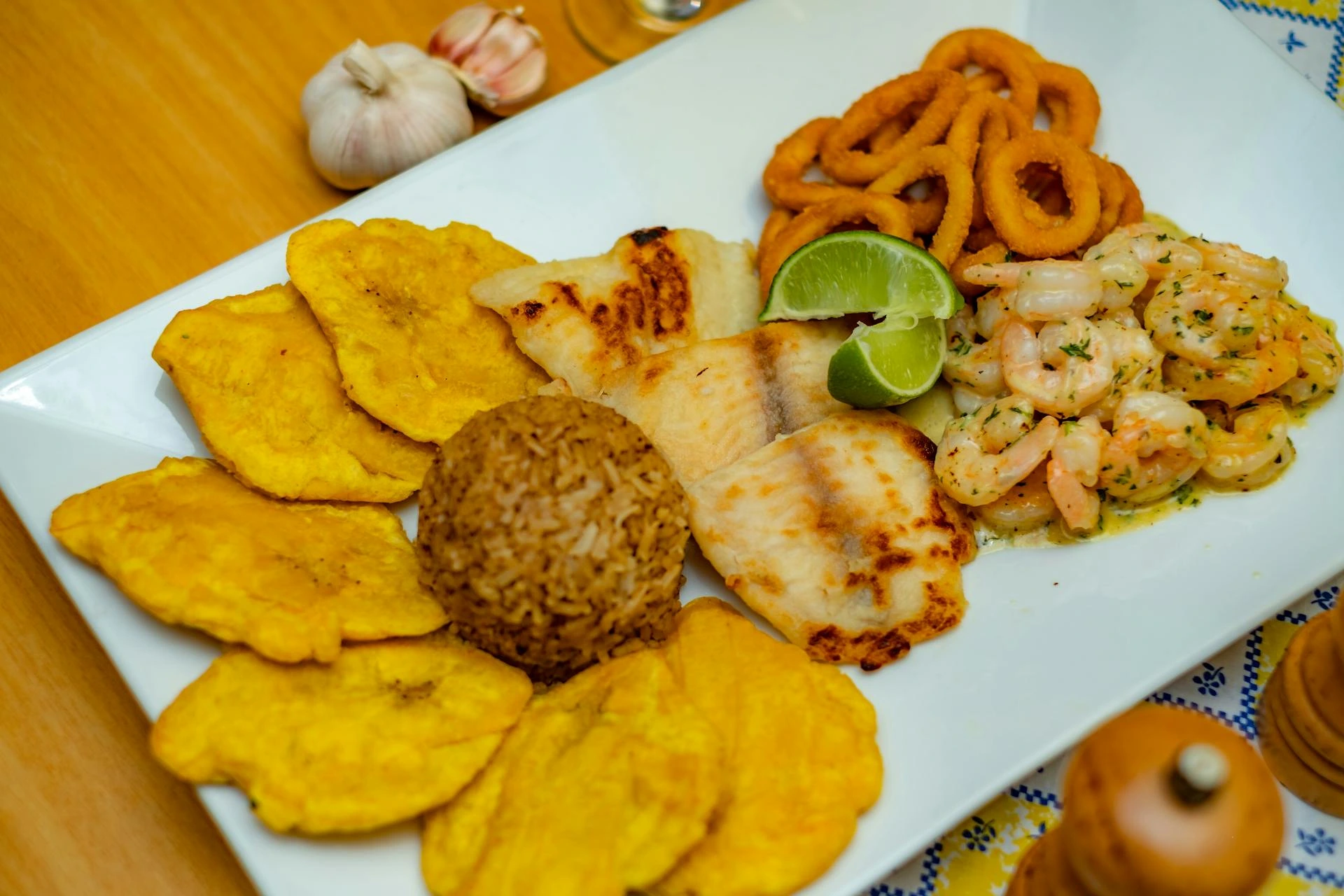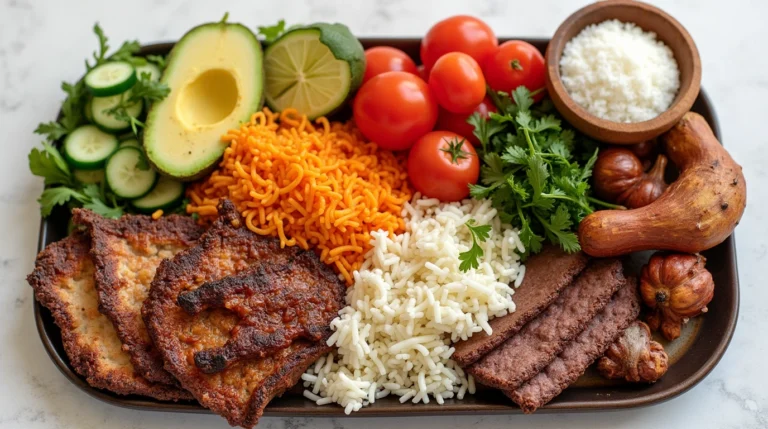Panamanian Food Dishes That Will Transport Your Taste Buds to Paradise
As a food enthusiast who’s spent countless hours exploring the vibrant streets of Panama, I can tell you that Panamanian food is one of Central America’s best-kept culinary secrets. The fusion of flavors, techniques, and cultural influences creates a unique gastronomy that deserves more recognition on the global stage. Today, I’ll take you on a flavorful journey through Panama’s most beloved dishes, sharing insider tips and stories that will make you want to book your next flight to this tropical paradise.
The Heart and Soul of Panama Cuisine
When we talk about Panama food, we’re not just discussing sustenance – we’re exploring a rich tapestry of history, culture, and tradition. Traditional Panamanian recipes have been passed down through generations, each family adding their own special touch while maintaining the authentic essence of these beloved dishes.
The beauty of Panamanian meals lies in their simplicity and the use of fresh, local ingredients. From the Pacific Ocean to the Caribbean Sea, from bustling city markets to rural farms, Panama foods showcase the country’s incredible biodiversity and cultural heritage.
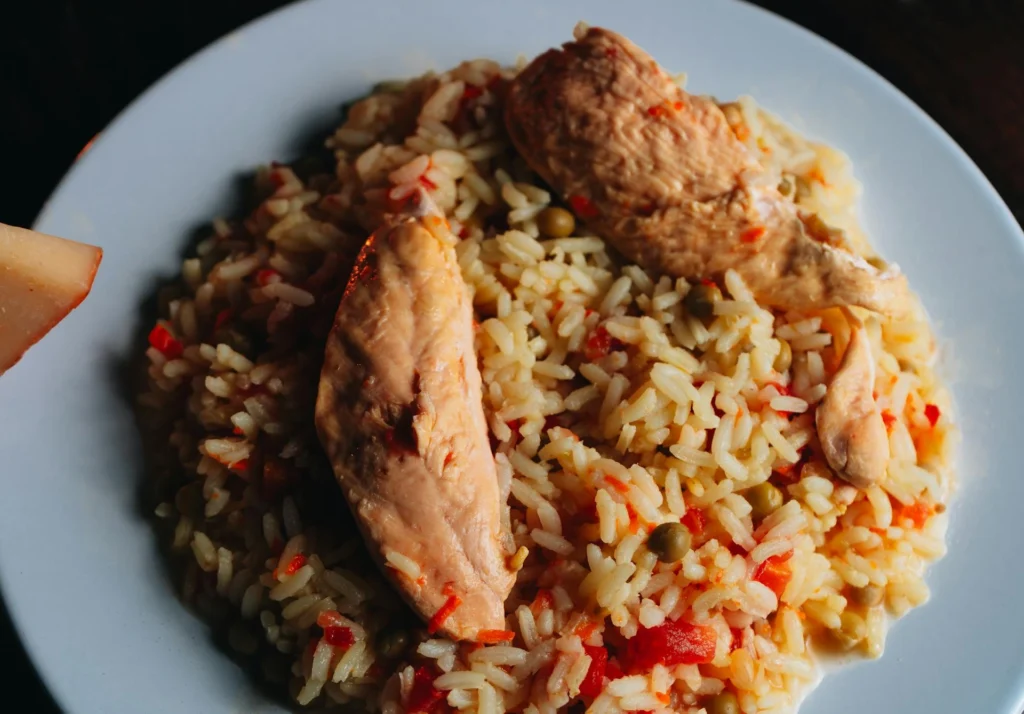
The Foundation of Panamanian Food: Key Ingredients
Before we dive into specific dishes, let’s explore the building blocks of Panama cuisine:
Rice and Beans: The Dynamic Duo
No discussion about traditional Panamanian recipes would be complete without mentioning rice and beans. These staples form the foundation of most meals, prepared with such care and attention that they’re never merely side dishes – they’re essential components of the culinary experience.
Fresh Seafood: Ocean’s Bounty
Thanks to Panama’s unique geography, seafood plays a starring role in many dishes. From the Pacific to the Caribbean, each coast contributes its own special touch to Panama food traditions.
Tropical Fruits and Vegetables
The abundance of tropical produce adds vibrant colors and fresh flavors to Panamanian meals. Plantains, yuca, and various root vegetables are staples that appear in countless dishes.
Must-Try Traditional Dishes
1. Sancocho: The National Pride
This hearty soup represents the soul of Panamanian food. Made with chicken, root vegetables, and herbs, Sancocho is more than just a dish – it’s a cultural institution. Every family has their own version, but the basic ingredients remain constant: chicken, ñame (yam), culantro (similar to cilantro), and various vegetables.
2. Ceviche Panameño
While Peru might be famous for ceviche, Panama’s version deserves equal recognition. Using fresh corvina (sea bass), the dish is prepared with lime juice, onions, and peppers, creating a refreshing appetizer that perfectly represents Panama cuisine.
3. Patacones (Tostones)
These twice-fried plantain slices are a testament to the ingenuity of Panama foods. Crispy on the outside, tender on the inside, patacones accompany almost every traditional meal and are a favorite street food.
Regional Specialties Worth Traveling For

Coastal Delights
The coastal regions of Panama offer unique interpretations of traditional Panamanian recipes. In cities like Colón and Portobelo, you’ll find dishes heavily influenced by Caribbean flavors and cooking techniques.
Mountain Cuisine
In the highlands of Chiriquí, Panama food takes on a different character. The cooler climate allows for the cultivation of different ingredients, leading to unique variations of classic Panamanian meals.
Modern Interpretations of Traditional Flavors
Today’s chefs are reinventing Panama cuisine while respecting its roots. In Panama City’s trendy restaurants, you’ll find creative takes on traditional dishes that showcase how Panamanian food continues to evolve.
The Social Aspect of Dining
In Panama, food is inherently social. Traditional Panamanian recipes are often prepared in large quantities, meant to be shared with family and friends. This communal aspect of dining is central to understanding Panama food culture.
Street Food Scene
No exploration of Panamanian food would be complete without mentioning the vibrant street food scene. From empanadas to chicharrones, the streets of Panama offer an accessible way to experience authentic local flavors.
Festive Foods and Celebrations
During holidays and festivals, special Panama foods take center stage. These dishes often require extensive preparation and are deeply rooted in tradition, making them an essential part of cultural celebrations.
Tips for Cooking Panamanian Food at Home
For those inspired to try their hand at Panama cuisine, here are some essential tips:
- Source fresh ingredients whenever possible
- Don’t rush the cooking process
- Learn the basic spice combinations
- Master the art of cooking perfect rice
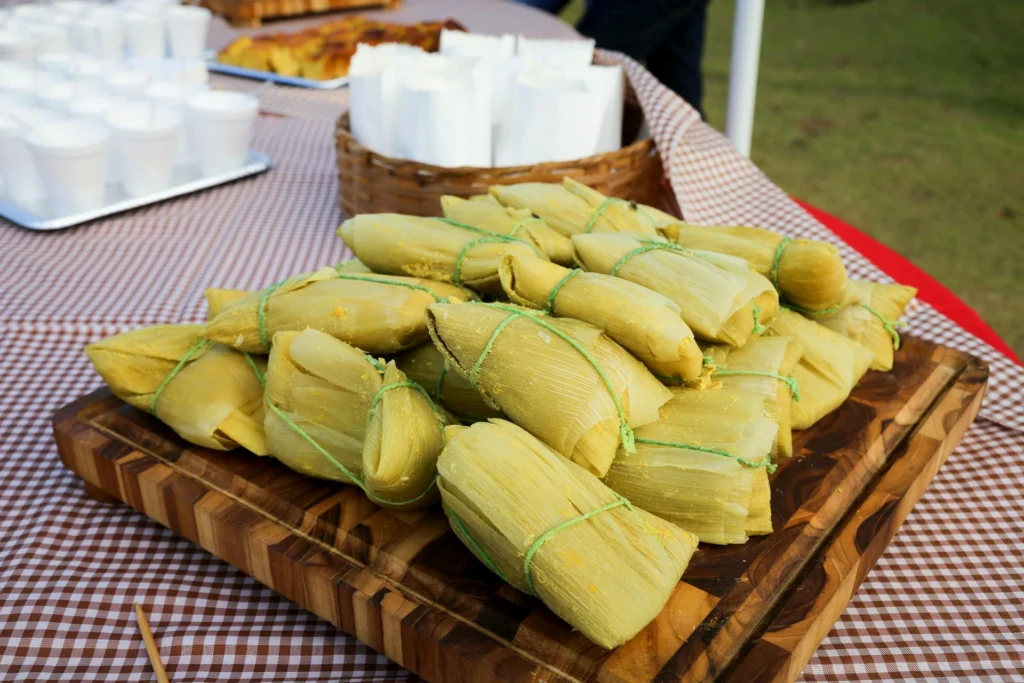
Where to Find the Best Panamanian Meals
In Panama City
- Mercado de Mariscos for fresh seafood
- El Trapiche for traditional dishes
- Fonda Lo Que Hay for modern interpretations
Beyond the Capital
- Portobelo for Caribbean-influenced dishes
- David for highland specialties
- Bocas del Toro for fresh seafood
The Art of Panamanian Cooking Techniques
Traditional Cooking Methods
Understanding traditional Panamanian food preparation requires familiarity with several key cooking techniques that have been passed down through generations. Panama cuisine relies heavily on these time-tested methods:
Sofrito: The Flavor Base
Every great Panamanian meal starts with a properly prepared sofrito. This aromatic base combines onions, garlic, bell peppers, and culantro, slowly cooked until the flavors meld together. It’s the foundation of many traditional Panamanian recipes and sets the stage for the complex flavors that characterize Panama food.
Slow Cooking
Many traditional dishes in Panama cuisine require patience. Slow cooking allows flavors to develop fully, especially in dishes like:
- Ropa Vieja (shredded beef)
- Guacho (rice and meat stew)
- Mondongo (tripe soup)
Modern Innovations in Traditional Cooking
While respecting traditional methods, modern Panama food preparation has evolved to incorporate new techniques and equipment. Today’s Panamanian meals might be prepared using:
- Pressure cookers for faster cooking times
- Air fryers for healthier versions of fried foods
- Sous vide for perfectly cooked meats
Seasonal Celebrations and Special Occasions
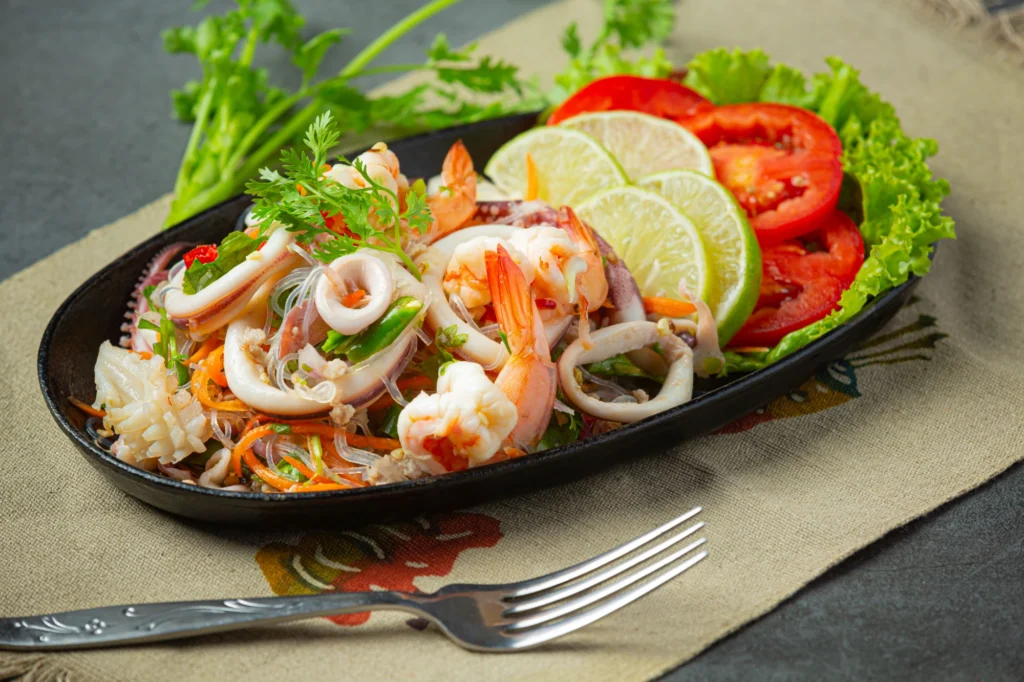
Christmas and New Year
During the holiday season, Panamanian food takes on special significance. Traditional dishes include:
- Tamales wrapped in banana leaves
- Arroz con guandú (rice with pigeon peas)
- Ron ponche (rum punch)
Carnival Season
Panama cuisine during carnival season features festive dishes that can feed large crowds:
- Sancocho de gallina (special festival version)
- Pesada de nance (traditional dessert)
- Various street foods and snacks
Regional Food Festivals
Throughout the year, Panama food festivals celebrate local specialties:
Festival Nacional del Manito in Ocú
This festival celebrates traditional Panamanian recipes and local ingredients, particularly corn-based dishes.
Festival del Marisco in Panama City
Showcasing the best of Panama’s seafood, this festival features innovative takes on traditional Panamanian meals.
Health Benefits of Traditional Panama Foods
Nutritional Value
Many traditional Panama cuisine elements offer significant health benefits:
- Fresh seafood provides omega-3 fatty acids
- Root vegetables deliver essential nutrients
- Tropical fruits offer antioxidants
- Beans provide protein and fiber
Medicinal Foods
Some Panamanian food items are valued for their medicinal properties:
- Culantro for digestion
- Soursop fruit for various ailments
- Ginger root for inflammation
Sustainable Food Practices
Farm-to-Table Movement
Modern Panama food culture increasingly emphasizes sustainability:
- Local farmer’s markets
- Indigenous farming techniques
- Seasonal ingredient usage
Ocean Conservation
Responsible fishing practices are becoming more important in Panama cuisine, ensuring traditional seafood dishes can be enjoyed by future generations.
The Future of Panamanian Cuisine
Fusion Innovations
Young chefs are creating exciting new interpretations of Panama food:
- Traditional ingredients in modern presentations
- International techniques applied to local dishes
- Creative takes on classic Panamanian meals
Preservation Efforts
Efforts are being made to document and preserve traditional Panamanian recipes:
- Cookbooks featuring family recipes
- Cooking schools teaching traditional methods
- Food heritage programs
Tips for Hosting a Panamanian Dinner Party
Essential Elements
- Start with traditional appetizers
- Serve family-style
- Include multiple side dishes
- Don’t forget the plantains
- End with traditional desserts
Beverage Pairings
Traditional and modern drinks that complement Panama food:
- Chicheme (corn-based drink)
- Local beers
- Tropical fruit juices
- Seco Herrerano cocktails
Panama’s Coffee Culture
While not typically associated with coffee production like some of its neighbors, Panama’s coffee scene is thriving:
- Geisha coffee from Boquete
- Traditional coffee preparation methods
- Coffee pairing with traditional pastries
Frequently Asked Questions About Panamanian Food
What is Panama’s national dish?
Sancocho is proudly considered Panama’s national dish. This hearty chicken soup combines root vegetables, herbs, and spices to create a comforting meal that’s especially popular during family gatherings.
What are common ingredients in Panamanian food?
The foundation of Panama cuisine includes rice, beans, plantains, yuca, various meats (especially chicken and pork), and an abundance of seafood. Fresh herbs and local vegetables are also essential components.
How does Panamanian cuisine differ from other Latin American cuisines?
Panama food stands out for its unique blend of Caribbean, African, and Spanish influences. Unlike some Latin American cuisines that are known for spicy dishes, Panamanian meals tend to focus on fresh, natural flavors rather than heat.
What is a typical breakfast in Panama?
A traditional Panamanian breakfast often features fried eggs, rice and beans (often leftover from the previous day), fresh bread or tortillas, and sometimes meat. Coffee is an essential part of the morning routine.
Are there vegetarian options in Panamanian cuisine?
Yes, while traditional Panamanian recipes often include meat, many dishes can be adapted for vegetarians. Rice and beans, vegetable-filled empanadas, and plant-based versions of traditional dishes are becoming more common.
What is the significance of Sancocho in Panamanian culture?
Beyond being the national dish, Sancocho represents unity and tradition in Panama cuisine. It’s often prepared for family gatherings and is considered a remedy for everything from hangovers to the common cold.
What are some popular street foods in Panama?
Panama food culture includes a rich variety of street foods, such as:
- Carne en Palito (beef skewers)
- Hojaldras (fried bread)
- Empanadas
- Patacones
- Corn-based snacks
Is seafood common in Panamanian cuisine?
Yes, thanks to Panama’s location between two oceans, seafood is a crucial component of traditional Panamanian recipes. Ceviche, fried fish, and seafood soups are particularly popular.
What are Patacones?
Patacones are twice-fried green plantain slices that serve as a staple in Panama foods. They’re often served as a side dish or snack and can be found everywhere from street vendors to high-end restaurants.
How is food typically served in Panama?
Panamanian meals typically follow a format that includes:
- A protein (meat, chicken, or seafood)
- Rice and beans
- Plantains or yuca
- A small salad
- Fresh fruit juice or coffee
Conclusion
Panamanian food represents a beautiful fusion of cultures, traditions, and fresh ingredients that create a unique and satisfying cuisine. Whether you’re planning a trip to Panama or want to explore these flavors in your own kitchen, the world of Panama cuisine offers endless possibilities for culinary adventure. From street food to family recipes, each dish tells a story of this vibrant country’s rich cultural heritage.

